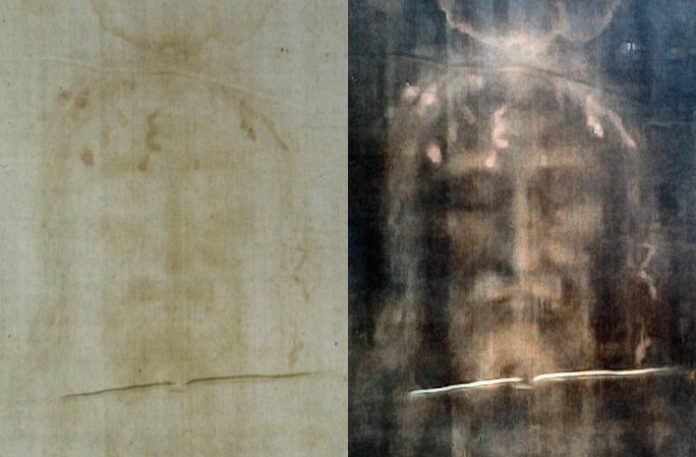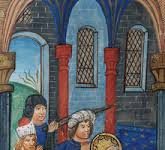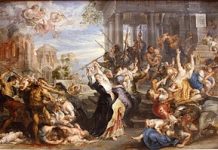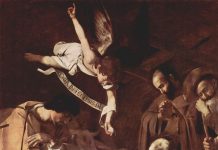Besides being ‘Star Wars Day’ May the Fourth is also, more realistically, the traditional commemoration of the Shroud of Turin, claimed to be the burial cloth of Christ – and there is much evidence that it is. But this is no ordinary cloth, for on it is imprinted – without any explicable scientific means, then or now – a negative image of Our Lord. That is, one can faintly see the image on the cloth, back and front, but when ‘developed’ – like one would a regular photograph- what comes out is all-too-true-to-life, a closeness to God that is palpable.

(wikipedia.org/public domain)
Here is Jesuit Father Robert Spitzer in an interview offering an apologia for the miraculous nature of the Shroud, while refuting the secular argument that it is of mediaeval origin.
And here is an intriguing, more secular, take from Dr. John Campbell:
Gerard Verschuuren also has book on the relic or icon, as your beliefs may sway, ‘A Catholic Scientist Champions the Shroud of Turin‘, (available at Sophia Institute Press), which title sort of gives away his own opinion, one which this writer happens to share: That this is the ‘winding cloth’ of Christ, donated for His burial along with the new tomb by Joseph of Arimathea, the same one in which He rose from the dead on that Easter night, burning – what verb does one use? – His own human image on the cloth with the divine power of that event that changed the world, and human life, forever.
Dr. Verschuuren compiles his argument under ten headings or chapters, which he summarizes helpfully at the end: He begins with a discussion of the limits and inherent uncertainty in the findings of science; that science is not the only path to truth; that there is more in the ‘universe’ – that is, all there is – than is open to empirical science. He also discusses the complementary relationship that should exist between science and faith, the two overlapping to some extent, but each having its own autonomy.
Turning to the Shroud itself, he discusses this sacred relic – for so I hold it – in light of its relation to what we know of Christ, and His suffering, from Scripture, and then history. A helpful summary follows, with chapters for each, on the analysis of the Shroud in light of history, computer analysis, the anatomy of crucifixion; the textile of the fibres; the pollen found within them; the controversial carbon dating (see below); an analysis of the blood and the DNA that can be found, and how this may be confounded with the hands of so many others through the centuries whose handled the object.
This is all very clearly and simply discussed in layman’s terms, but signifying a deep knowledge of the material. Readers may recall the carbon-14 dating study performed in 1988 supposedly ‘proving’ the shroud was no older than the 1200’s, and published in the prestigious journal Nature. Dr. Verschuuren puts paid to the limits and even errors in this study (based largely on the sample that was taken, which was likely mixed in with a repair made by Poor Clare nuns in that era).
All in all, the evidence is overwhelming on the miraculous nature of the Shroud: It is not a painting, but an apparent, and inexplicable, 3-D image of a scourged, tortured and crucified Man, placed there by an burst of quasi-cosmic energy waves unknown in any previous era, and impossible even to produce in our own. The image, furthermore, is of a Man suspended in mid-air – no longer on a cross, but glorified and levitating by powers beyond our ken.
But as Dr. Verschuuren rightly points out, science cannot ‘prove’ the image is that of Christ, but neither can it disprove it either. He makes a strong case that what we know empirically supports its origin from the time that Christ was crucified, and our faith and devotion may take it from there.
We may thank the good scientist for contributing to this ongoing discussion, and for a helpful summary of what may help our faith in this fractious time. For only the truth can set us free, and we all know Who the Truth is. As Saint Thomas put it in his poem Adoro Te Devote:











